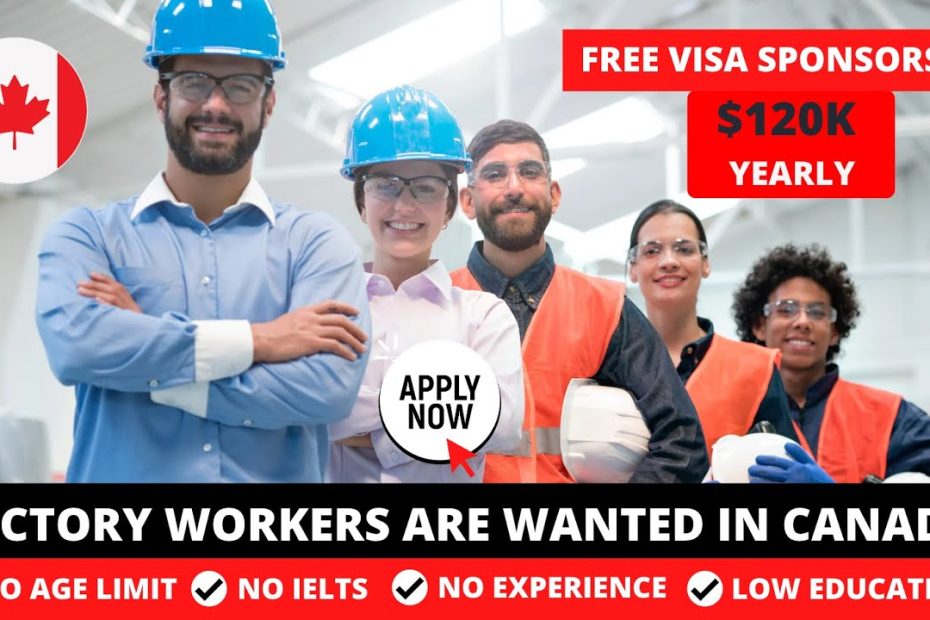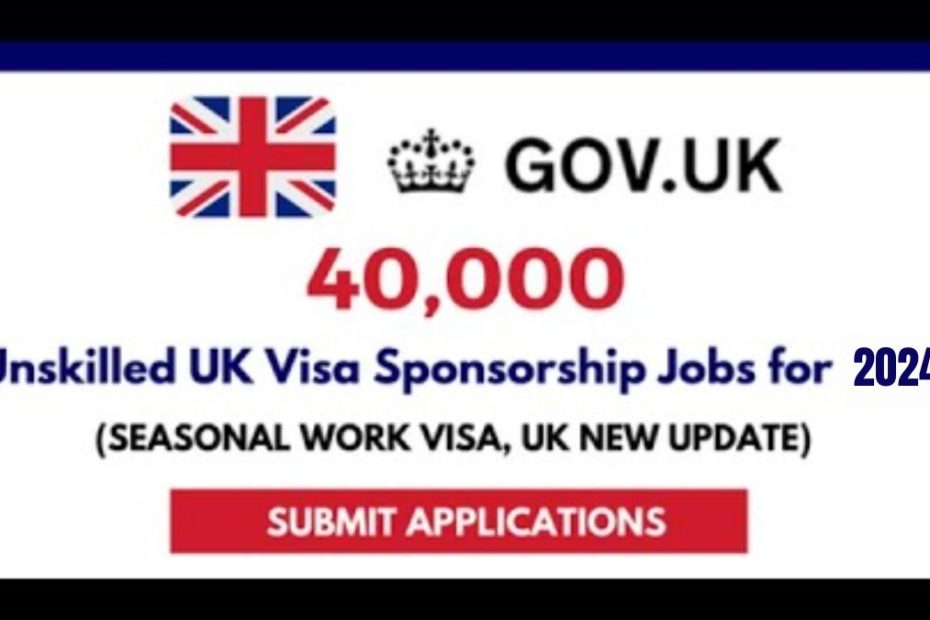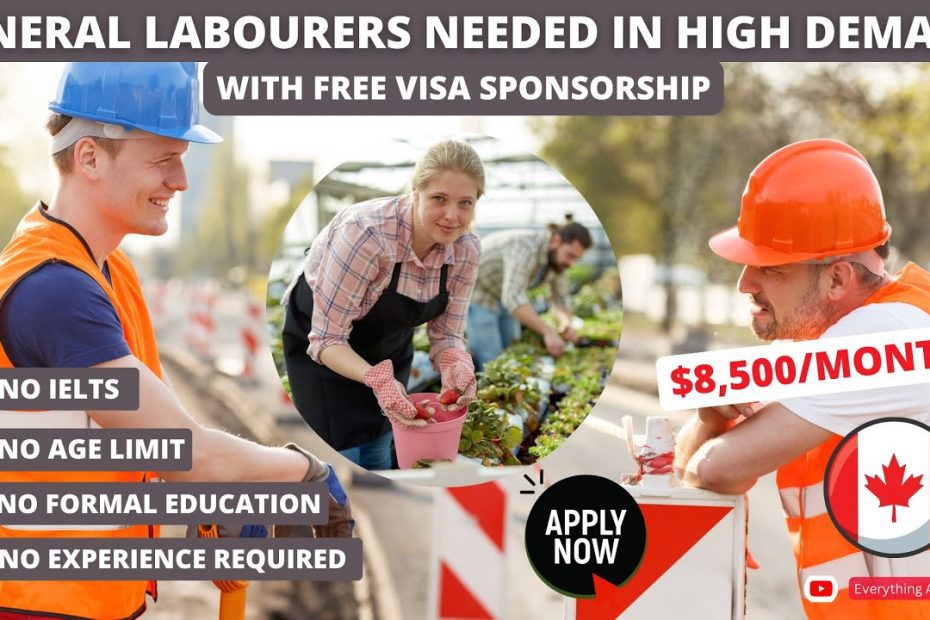Are you looking to pursue your career goals in the United States? Visa sponsorship can be your way to a fulfilling life and career.
In this guide, you’ll learn about the different visa options, eligibility criteria, and potential industries that offer exciting opportunities with salaries reaching up to $110,000 or more in 2024/2025.
What Is Visa Sponsorship?
Visa sponsorship is a process that allows someone from another country to live and work in the United States. Without sponsorship, it can be challenging for a foreigner to move to the U.S. and find jobs. However, there are two main types of sponsors:
1. Employers:
Companies in the U.S. usually sponsor skilled workers they want to hire. For example, If you’re a software engineers or data scientists, tech companies could be looking to sponsor you.
2. Family Members:
U.S. citizens or permanent residents can also sponsor their relatives, like spouses or children, to help them come to America.
But when a company or family member wants to sponsor someone, they must provide documents to the U.S. government, which includes proof that they can support the person financially.
Types Of Visa Sponsorship
Here are the main categories of visa sponsorship:
1. Employment-Based Sponsorship
Employment-based sponsorship is when a U.S. employer helps a foreign worker get a visa for a specific job. This is common in industries like technology, healthcare, and engineering. However, here are some visas in this category:
- H-1B Visa: This visa is for skilled workers in specialty occupations. Let’s take for instance, if you are an engineer or a doctor, a U.S. company can sponsor you to work for them.
- L-1 Visa: This visa is for employees who are transferring within the same company to a U.S. office. If you work for a multinational company and get promoted to a position in the U.S., this visa can help you move.
- EB Visas: These are employment-based green cards for individuals seeking permanent residency. They are for workers with extraordinary abilities, advanced degrees, or those who can create jobs in the U.S.
2. Family-Based Sponsorship
Family-based sponsorship is for U.S. citizens or permanent residents to help their relatives immigrate to the U.S. Here are some common types of family-based sponsorship:
- Immediate Relative Visas: These are for spouses, children, and parents of U.S. citizens. They are prioritized in the immigration process.
- Family Preference Visas: These are for other relatives, like siblings or adult children of U.S. citizens and permanent residents, but they may have to wait longer for approval.
3. Student Sponsorship
Student sponsorship allows educational institutions to sponsor international students who want to study in the U.S.
- F-1 Visa: This visa lets students attend accredited schools in the U.S. It also permits them to work part-time on campus, which can help cover living expenses.
4. Investor Sponsorship
Investor sponsorship is for individuals who invest a significant amount of money in a U.S. business.
- EB-5 Visa: This visa is for investors who create jobs in the U.S. through their investments. If you invest $1 million (or $500,000 in targeted areas), you can apply for a green card.
5. Diversity Visa Program
The Diversity Visa Program is a lottery system that provides an opportunity for people from countries with low immigration rates to the U.S. to apply for a green card. This program helps adjust the immigrant population in the U.S.
Eligibility Requirements For Visa Sponsorship
These are the main eligibility requirements you need to know, which Include the general requirements, and visas requirements:
General Requirements
1. Legal Presence:
The sponsor must be a U.S. citizen or a lawful permanent resident. So, If someone is sponsoring you, they must have proof of their status, like a passport or green card.
2. Financial Stability:
The sponsor must show that they can financially support the person they are sponsoring, and this involves providing documents like pay stubs, tax returns, or bank statements.
Ideally, the U.S. government wants to make sure that the sponsored person won’t need to rely on public assistance or welfare.
3. Clean Criminal Record:
Both the sponsor and the applicant should have no criminal history. A clean record guarantees the safety of everyone in the U.S.
Visa Requirements
1. Employment-Based Visas:
Job Offer:
To qualify for an employment-based visa, the applicant must have a legitimate job offer from a U.S. employer. This employer must be willing to sponsor the applicant for the visa.
2. Qualifications:
The applicant must meet the job requirements, which include specific skills, education, or experience. Assuming a company is looking for a software engineer, the applicant usually needs a degree in computer science or a related field.
Family-Based Visas:
3. Relationship Proof:
If a family member is sponsoring you, you need to prove your relationship. This can be by marriage certificates for spouses or birth certificates for children.
4. Sponsorship Commitment:
The sponsor must agree to support the applicant financially, providing that they can cover living expenses and won’t need government help.
Student Visas:
5. Acceptance into a School:
For student visas, the applicant must be accepted into an accredited U.S. educational institution, such as a college or university.
6. Financial Proof:
Students must show they can pay for tuition and living expenses while studying in the U.S. You may be asked to provide bank statements or scholarship letters.
High-Demand Industries Offering Visa Sponsorship
Many sectors in the U.S. are not only looking for talented individuals but are also willing to sponsor visas for skilled workers. Here are some of the top high-demand industries that provide opportunities with salaries around $110,000 or more.
1. Technology
The technology industry is one of the biggest employers in the U.S., with companies like Google, Microsoft, and Amazon always seeking skilled workers. Positions such as software developers, data scientists, and cybersecurity experts are in high demand. And, the average salary for software developers can range from $100,000 to $130,000.
2. Healthcare
Healthcare is another huge industry that sponsors visas. With a growing need for professionals, roles like registered nurses and physical therapists are highly sought after.
Many healthcare facilities, especially in underserved areas, are willing to sponsor visas for foreign workers. Registered nurses can earn an average salary of $75,000 to $110,000, while physical therapists can make between $80,000 and $120,000.
3. Engineering
The engineering sector remains essential to the U.S. economy, with companies like Boeing and General Electric actively recruiting skilled engineers. Positions such as civil engineers, mechanical engineers, and electrical engineers are often sponsored.
However, the average salary for engineers typically ranges from $80,000 to $120,000, depending on the specific field and level of experience.
4. Finance
The finance industry is known for its competitive salaries and opportunities for career advancement. Major banks and financial institutions, such as JPMorgan Chase and Goldman Sachs sponsor visas for roles like financial analysts and investment bankers.
Financial analysts can expect to earn between $80,000 and $120,000, while investment bankers earn even more, especially with bonuses.
5. Consulting
Consulting firms like Deloitte and Accenture are also sponsors of visas. They look for professionals in management consulting and IT consulting.
The average salary for consultants can range from $90,000 to $130,000. However, It depends on their experience and the complexity of the projects they handle.
How To Find Visa Sponsorship Opportunities?
Here’s a step-by-step guide to help you find visa sponsorship opportunities:
Step 1: Know Your Visa Type
The first step in your search is to determine which visa type suits your needs. There are different visa categories, such as employment-based visas (like H-1B and L-1), family-sponsored visas, and student visas.
Understanding the specific requirements for each visa type will help you focus your search on employers who are likely to support your application.
Step 2: Research Potential Sponsors
Then, conduct thorough research to identify potential sponsors. Look for companies, organizations, and academic institutions that have a history of sponsoring visas.
Many multinational corporations, such as Google, Amazon, and Deloitte, are known for hiring foreign talent. Analyzing their past sponsorships and involvement in your industry can help you target sponsors who are more likely to support your visa application. Websites like Glassdoor and Indeed can provide insights into companies that sponsor visas.
Step 3: Use Online Resources
Online job platforms are invaluable tools in your search for visa sponsorship opportunities. Use filters on sites like LinkedIn, Glassdoor, and Indeed to narrow down your job search to positions that explicitly mention visa sponsorship.
Additionally, take a look at professional networks and alumni groups to gather insider information and potential referrals.
Step 5: Directly Contact Employers
You can also reach out directly to employers known for sponsoring visas. Customize your communication by highlighting your qualifications and the value you can bring to the organization. Craft a perfect cover letter that addresses the employer’s needs while expressing your interest in visa sponsorship.
Step 6: Consider Government Programs
Research government-sponsored initiatives that provide opportunities to gain work experience and cultural exchange with visa sponsorship components.
Programs like the J-1 Exchange Visitor Program or the H-2B Temporary Non-Agricultural Workers Program offer avenues for securing visa sponsorship while gaining valuable experience in the U.S.
Sure Opportunities:
- [HIRING NOW] Fruits Farm Jobs In Canada🇨🇦+Visa Sponsorship – No Experience...
- [URGENT HIRING! 🇬🇧] Care Assistant Jobs with Visa Sponsorship – APPLY NOW
- These Canadian Companies Will Offer You Jobs + Visa Sponsorships – LINKS HERE
- UK Tier 2 Visa Sponsored Jobs Available For Foreign Workers | Quick Hiring
- If You Want To Relocate To Canada🇨🇦, Get Any Of These Jobs Now – APPLY HERE
- Move To Australia🇦🇺: Visa Sponsored Jobs Available HERE – Apply Now
- DON’T MISS! 21+ Fully-Funded Scholarships In UK Available For You Now
- [JOBS IN UK🇬🇧] Warehouse Jobs Available With Visa Sponsorship – Interested?
- Study In The UK For FREE? 21+ Fully-Funded Scholarships Available For You





